The forced movement of water in water supply and heating systems is provided by pumps. Reliable and effective work pump, for space heating, supply of cold and hot water will provide all domestic needs, and in some cases, industrial needs.
The normal functioning of the Wilo pump is possible only if the operating rules are observed, timely maintenance (preventive maintenance), high-quality diagnostics and repair are carried out.
1 Operational Requirements
To avoid premature repair of Wilo pumps, the following should be observed:
- exclude work on idling(in the absence of water in the system);
- do not block the water flow when the pump is on;
- set the operating mode in accordance with the minimum and maximum capabilities of the equipment;
- follow the manufacturer's recommendations on the allowable pressure in the system;
- do not allow heating of the coolant suitable for the pump, more than 65 ° C;
- avoid long downtime;
- use filters to purify the water circulating in the system.
Subject to these rules, the included pump will make a uniform sound and maintain a stable pressure, which is evidence of its normal operation. Most pumps operate without repair for 5 years or more, until the main elements are completely worn out, provided that all operating rules have been observed.
1.1 Prevention
In order not to require repair of the Vilo pump, it is necessary to carry out periodic preventive maintenance. Simple maintenance of the device can be done by hand, without resorting to the services of specialists. To do this, at least 4 times a year, inspect and, if necessary, clean the pump. As practice shows, cleaning is necessary after 2-3 years of operation, depending on the quality of the coolant and the general conditions under which the heating and water supply systems operate.
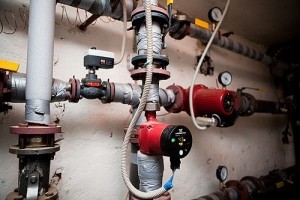
When inspecting the equipment, be sure to pay attention to the following points:
- no leaks at the joints;
- grounding performance;
- the absence of extraneous sounds during the operation of the device (clang, knock);
- lack of vibration;
- pressure in the system in accordance with technical standards;
- dry and clean body of the device.
Wilo pumps, in most models, are reliable and do not require regular maintenance. But prevention, provided that the warranty period has expired, can be carried out independently.
This will require:
- cap key;
- Phillips screwdriver;
- flat screwdriver;
- cleaning brush.
Before dismantling the pump, water is drained from the system or the area is blocked to dry disconnect the device. Then the pump is removed, and the following steps are performed:
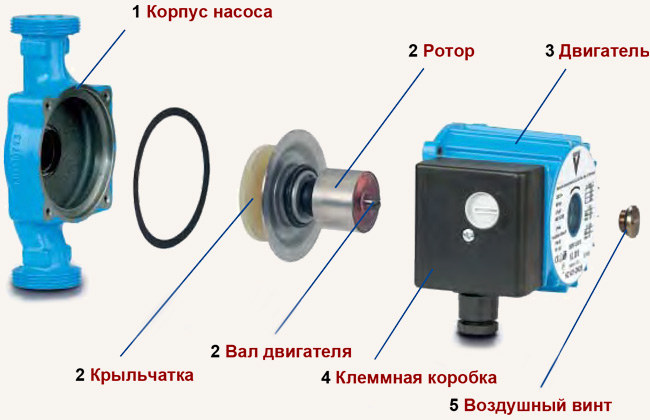
After completing these steps, the main disassembly is completed and the internal surfaces of the shell, impeller and rotor are cleaned from scale or dirt deposits.
Surfaces are cleaned with a stiff polymer brush with a small amount of cleaning agent containing hydrochloric acid.
In case of strong (sticky) contamination, it is permissible to use zero sanding paper.
The main malfunctions of Wilo pumps are the wear of the thrust bearings. If such a factor is identified, it is difficult to replace them with your own hands, so it is better to contact a service center.
Before reassembly, all gaskets and seals are checked for cracks or breaks. But since the pump has already been disassembled, it is advisable to replace them with new ones.
2 Basic problems and solutions
In cases where vibration appears during the operation of the device, extraneous noise occurs, the pressure in the system changes, their cause should be determined and, if possible, the malfunctions should be eliminated.
When turned on, the pump hums, but the shaft does not rotate:
- the shaft jammed due to a long period of inactivity. Remove the protective cap on the motor housing and turn the shaft with a flat screwdriver;
- if foreign objects get in, disassemble the pump and clean the impeller, then replacing the cleaning filter, which is installed in front of the device;
- power supply problems (insufficient mains voltage).
When turned on, the device does not work:
- there is no mains voltage. Electrical wiring and protective automation are checked;
- the fuse has blown. Replaced with a new one.
Automatic shutdown of the device after a short period of operation:
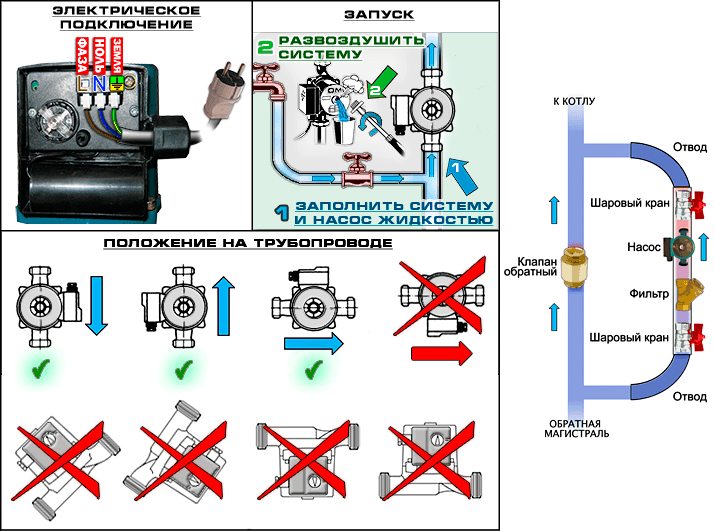
- accumulation limescale in the stator glass. The glass and the rotor of the electric motor are being cleaned.
During operation, the pump makes a lot of noise:
- dry operation with air in the system. Release the air and make sure that the pump shell is filled with liquid;
- cavitation. Pressurize the fluid line.
Excessive pump vibration:
- critical condition of thrust bearings with heavy wear. Bearings should be replaced.
Reduced head and flow compared to manufacturer's specifications:
- power failure or phase change resulting in power loss or reverse rotation of the impeller. Phase check (three-phase motors) and capacitor replacement (with single-phase power supply);
- the pipeline has a high resistance to the movement of fluid (hydraulic resistance). Clean (replace) filters, check stop valves, if necessary, increase the diameter of the pipes.
Automatic shutdown of the pump by an external protection system:
- malfunction of the electrical components of the device. Check connection terminals (oxidation, short circuit), capacitor (replacement), control unit.
2.1 Repair
It is better to repair your faulty pump at a service center if the warranty period has not yet expired. Some models are non-separable or partially disassembled, which means repair work in the form of replacing entire blocks or the entire device.
![]()
In the absence of a guarantee and the possibility of disassembling the pump, minor repairs performed independently.
According to the above signs, the causes of malfunctions are eliminated, and repairs are carried out if the design of the pump allows it to be disassembled.
Operating elements of the control unit that can cause failure of the pump and must be replaced:
- capacitor;
- connection block (terminals);
- speed controller.
Since the capacitor has a small capacitance, its performance can be checked using the C-meter that is built into the multimeter. If a discrepancy with the nominal values is found, this part should be replaced with a new one. It is important not to reverse the polarity of the connection and check the voltage compliance. In a conventional single-phase electric motor, capacitors are installed that are approved for inclusion in the network up to 450 V.
If the speed controller breaks down, it is replaced with a new one, in compliance with correct connection terminals.
Terminals must always be clean, dry, free from overheating and carbon deposits. If the above problems are identified, they should be replaced with new ones, similar or the same if possible.
During post-warranty operation, problems with support bearings are possible. It is better to replace them in a specialized workshop.
To prevent the formation of scale on the impeller and siltation of the stator cup, high-quality filters should be installed and the prepared liquid should be used in closed heating heating systems. If these conditions are met, the pump will work in ideal conditions and will not bring repair problems for a long time.
2.2 Disassembly for repair of WILO circulation pumps with a "wet" rotor (video)
Pumps are the most important part of heating systems with forced circulation. Depending on their location in the heating system, they are responsible for the temperature of radiators or underfloor heating, forcing the coolant to circulate from the boiler through all heating circuits, thereby giving the inhabitants of the house warmth and comfort. But then there was a nuisance - the pump broke. The age-old question immediately arises - what to do? Take it to a heating pump repair shop, try to fix it yourself or immediately buy and install a new one circulation pump?
There is no definite answer to this question - it all depends on the nature of the breakdown and your desire to repair the heating pump.
We list the problems that can be eliminated during the repair of heating pumps in living conditions, with your own hands.
Such defects in the operation of circulation pumps include:
- The pump is not working
- The pump does not pump the coolant
- Poor pump performance
- Increased noise when the coolant is supplied to the heat exchanger
- Increased pump noise
Let's start with an analysis of the reasons why your pump does not work at all.
- Weak network power. As in the case of electrical warm floors(“Repair of an electric underfloor heating”), to solve the problem, you need to initially choose a pump that also works at low voltage values \u200b\u200b(if found). Alternatively, install a voltage stabilizer. It happens that the pumps do not work due to the banal reason for the lack of voltage in the network.
- A fairly common problem among pumps that have been operating for more than a year is the presence of deposits on various parts of the pump. Possible solutions - carefully, with a minimum application of force, unlock the rotor with a screwdriver or briefly switch the rotor to rotation at maximum frequencies.
- Jamming of the pump due to clogging with solid particles / objects, as well as - operation in conditions other than those indicated in the passport for the pump. Suggested solutions are to remove foreign objects and select another pump with suitable usage characteristics.
- Failure various details pump (capacitor, power cable, motor). It is set by measuring the resistance. It is eliminated by replacing the defective part with a serviceable one. In case of impracticality or lack of a suitable part, purchase a new pump.
- Operation of protective devices. After identifying the problem and eliminating it in the electrical panel, blocking the triggered protective device removed.
So, we successfully completed the repair of the heating pump and we managed to start it up!
The next trouble that happens to household heating pumps is usually formulated as follows: "... the pump seems to be working, but it does not pump the coolant ...".
What's the matter here? And the matter is hidden in four types of possible malfunctions.
- Saturation of the coolant with air or outflow of the coolant. Eliminated with the identification and repair of cracks and holes in the pipeline.
- The heating system is incorrectly adjusted. The problem is solved by checking right position all taps (especially before the pump). Perhaps the coolant simply does not reach the pump.
- No water. The problem is similar to the previous one. It is solved by supplying the coolant to the pump.
- Valve stuck or stuck in closed position. This also happens. To eliminate, repair or replace the valve (if, of course, there is one).
After detecting and eliminating one of the listed faults, the repaired heating pump should start pumping the coolant.
The next class of faults is associated with low pump performance. What to do in this case? How to repair a heating pump?
- Low mains power. Install a voltage stabilizer.
- The pipeline is damaged, there are leaks. In this case, repair or replace the defective part of the pipeline.
- Weak pressure in the pipeline. Reduce the value of the hydraulic resistance of the heating system or replace the pump with a more powerful one.
- Incorrectly adjusted heating system. Walk along the pipeline and make sure that all valves are in the required position (closed/open). If the valve is blocked or jammed in the wrong position, repair or replace the valve; change its working position.
The indicated tips should in practice help to increase the performance of the pump.
Now let's talk about what causes extraneous noise both in the coolant supply system to the heat exchanger and in the pump itself.
Noise during the supply of coolant to the heat exchanger, as a rule, is due to two reasons:
- The set pump performance mode is higher than needed to supply the coolant. As you might guess, the noise is eliminated by switching the pump to a lower capacity.
- Too much air in the heating system. Eliminated with the removal of air from the heating system.
Noise in the pump itself can almost always be explained by the following reasons:
- Lack of necessary support. It is solved by increasing the value of the back pressure at the inlet to the pump.
- The presence of air in the pump. Eliminated by removing air from the pump.
Repair of the heating pump in case of various other malfunctions, such as, for example, wear of the shaft or smudges of the coolant from the pump, on different models pumps can be eliminated different ways, ranging from the replacement of rubber gaskets with the installation of new gaskets and ending with the processing on lathe, which requires certain knowledge and skills from the user of heating pumps. It is from such factors as your wishes (whether you are satisfied with the pump that you have now or would you like to change some parameters of its operation), the availability of financial opportunities, time and relevant skills depends on what you choose - take it to a heating repair shop pumps, try to fix it on your own or immediately buy and install a new circulation pump. However, even if you prefer a new pump, it would be nice to repair the old one too - so, just in case, keep it on the farm as a spare. This is rational, since not a single pump, even the most expensive and reliable one, is immune from breakdowns. Knowing the Russian climate, leaving yourself a chance to be without a functioning heating system at the very peak of cold weather would be extremely imprudent.
The heat pump not only circulates the liquid, it contributes to the uniform heating of even the most distant radiators in the system. In order for the heating system to work efficiently, the coolant must circulate freely and quickly enough inside the circuit.
Otherwise, the batteries will not heat up, and the liquid in the boiler will boil. The greatest demand is for volatile units in which water is circulated through pipes by a pump.
Every mechanism fails sooner or later, and circulating heat pumps are no exception. This article lists the main causes of device breakdowns and provides instructions on how to provide first aid to it.
 Most often, owners face such problems:
Most often, owners face such problems:
- Shaft lock. The pump hums, but the moving parts remain static. One of the main causes of such a malfunction is the oxidation of the shaft. This happens after turning off the device for a long time.
- Strong vibration. If the pump makes noise and trembles, the bearing is most likely worn out..
- Sometimes there are power problems. They can be expressed in different ways. In the first case, the pump does not turn on at all. The second turns on external protection electric motor shortly after starting the unit.
- Sudden shutdown. It is caused by the accumulation between the rotor and the stator of plaque.
The following steps are required to resolve the issues described.
Trouble-shooting
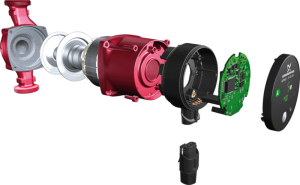 Depending on the existing problem, solutions may be as follows:
Depending on the existing problem, solutions may be as follows:
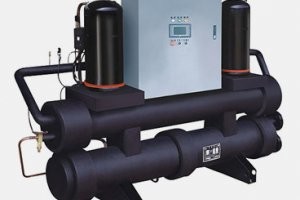
- absence of vibration and noise during operation of the device;
- normal pressure and flow rates of the pump;
- the presence of grounding on the instrument case;
- stability of the engine heating level;
- normal wire connection;
- no leaks at the junctions of the pipes and the pump.
Repair heat pump it should be preceded by diagnostics, with the help of which malfunctions and their causes are detected.
Diagnostics involves checking the temperatures inside the unit, the discharge pressure and suction power.
In most cases, the pump must be disassembled for repair. On the body of the device you can find the heads of the bolts. A hex wrench is sold with the pump, with which these bolts are unscrewed. After the cover is removed, the rotor should be removed from the sleeve.
Repairman's advice:"Sticky" bolts can be unscrewed without any problems if applied to them special aerosol"liquid key". After 15 minutes, the bolt will give in.
Basically, all pumps are assembled from modules. The repair of the heat pump comes down to replacing the failed part of the device.
The heart of any heating system is the circulation pump, which is responsible for the forced movement of water in the system. To minimize energy costs and at the same time create comfortable temperature conditions in a residential area, buy Wilo pumps.
Ensuring their efficient and reliable operation, extending the service life occurs through compliance with operating rules, timely maintenance. If the owner ignores these requirements, equipment malfunctions will inevitably occur. Their elimination in the case when the warranty period has expired is often done by hand.
1 Design and technical features
Vilo pumps significantly increase the efficiency of the heating system and the heat transfer of the coolant. Their use makes it possible to use pipes with a smaller cross section when assembling the line, which will reduce fuel costs, reduce carbon dioxide emissions, and make it possible to achieve savings without losing the quality of operation. This is achieved through a properly thought out and developed design, designed for continuous operation.
The Wilo pump consumes no more than 250 W per day, the operation is silent, since there is no fan and similar technical elements that produce noise. There are two types of circulating equipment on sale - with a dry and wet rotor. The latter are used in the installation of heating systems, as a rule, inside small buildings. The difference also lies in the power and volume of the pumped medium. The weakest model is able to make the heating system more efficient on an area of 200 sq.m.
Powerful is designed for heating buildings, the area of which reaches 1000 sq.m. Both the one and the other unit has the most simplified design and small dimensions. The technical characteristics regarding the head height make it possible to raise water from 8 meters at a flow rate of 5 m3/h.
Distinctive features are the strength and corrosion resistance of the Wilo pump material. For example, the body is cast from cast iron, the shaft is located inside it, - of stainless steel. Its fastening is possible thanks to graphite bearings. The water flow rate is equipped with a three-stage adjustment.
The permissible temperature of the coolant in household products should not exceed +110 ° C, for industrial temperature limit increased. As for the working pressure, the units operated in everyday life are able to withstand 10 bar, and industrial ones - 16.
The operation of the system is controlled by automation. Some models of circulators have a thermostat. The functions of the mechanism are displayed on the liquid crystal display. You can also control the shaft speed by manual switching. Connecting the device is simple and quick, which is facilitated by the presence of spring terminals. Power surges are not terrible for the pump, since the motor and rotor have a multi-stage protection system.
1.1 Requirements for operation and prevention
In order to avoid premature repair of Wilo pumps, the manufacturer urges to adhere to the following:
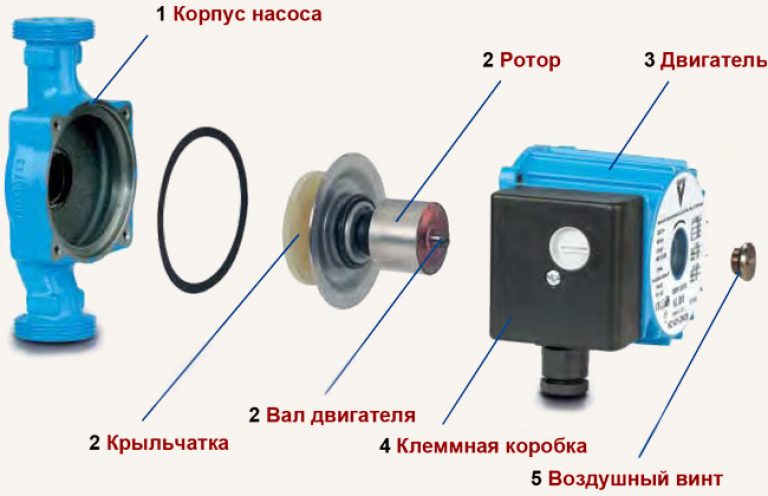
Subject to these rules, the pump will be characterized by maintaining a stable pressure, and the sound emitted during operation will be uniform and quiet. Most pumps do not need to be repaired for 5 years from the moment they are put into operation. It is required only when the main components are completely worn out or force majeure circumstances that caused the device to fail.
Prevention is another type of periodic measures, the implementation of which insures the pump and its elements against premature breakdowns. At the same time, a simple Maintenance carried out by hand, without the intervention of a specialist. To do this, at least 3-4 times annually, a visual inspection of the external and internal parts unit and clean it if necessary.
Practice shows that cleaning becomes mandatory after 2-3 years of operation. The quality of the coolant affects the conduct of cleaning procedures, General terms under which the heating system operates.
For prevention, it is necessary to prepare a Phillips and flat screwdriver, a spanner wrench, and a cleaning brush. Inspection requires disassembly, during which you will find the main components of the hydraulic structure: housing, impeller, motor shaft, rotor, terminal box, propeller and the motor itself. Pay attention to such nuances:
- grounding performance;
- absence of leaks at the joints;
- pressure value in accordance with technical standards;
- lack of vibration and extraneous sounds (knocking, clanging);
- hull condition. It must be clean and dry;
- the pump should not get very hot;
- the amount of grease on bearings, flanges and driving units must be sufficient;
Also make sure that the terminal box cables are free of moisture and securely fastened, the gaskets provide a seal, and the connections to the mains are strong. Before dismantling the device, water is drained from the system, the area of \u200b\u200bits receipt is blocked, after which the pump is removed.
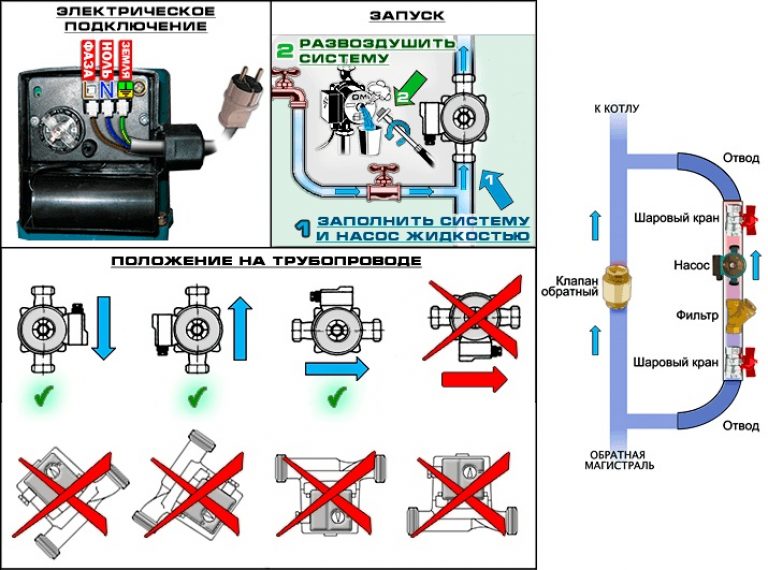
6 bolts connecting the shell of the pump part and the motor housing are unscrewed with a ring wrench. When the shell is removed, access to the drainage holes will appear. The impeller remains on the motor rotor. With the help of a narrow flat-type screwdriver, a shirt is prying off, which serves for the impeller and motor compartment. The actions taken will bring the rotor shaft and the impeller out of the stator cup.
On this stage cleanse inner surface shells, rotor and impeller from mud deposits or scale. A stiff polymer brush and a small amount of hydrochloric acid cleaner will help with this. It would be useful to check all seals and gaskets for cracks, if found, replace them with new ones.
Repair of the pump is carried out only after disconnecting the power cable and drainage of the site. It should be said that pumps with a wet rotor are equipped with modules depending on required power and size. Restoring the health of these devices is facilitated - the faulty module is replaced with a new one.
If the warranty period has expired and the repair is minor, you can do it yourself; in case of a more serious malfunction, take your pump to a service center. Most often, repair work comes down to replacing entire assemblies or the entire pump. The following working parts are subject to replacement: connection block, capacitor, speed controller, bearings.
2.1 Disassembly of Wilo circulation pumps for repair (video)
2.2 The shaft does not rotate when the pump is on and characteristic sounds
The reasons are: oxidation of the shaft after long downtime or the ingress of a foreign object into the impeller. In the first case, you need to repair the pump by following these steps: drain the water, unscrew the screws that tighten the motor and housing. Remove the motor with rotor and impeller. Turn the last knot by hand. Low power products require a screwdriver to unlock the shaft. For her, there is a special notch at the end of the shaft.
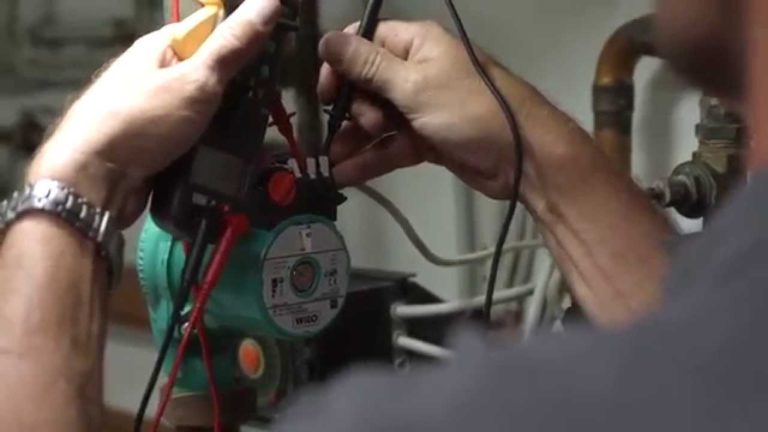
In the second case, it is enough to dismantle the electric motor and remove the foreign object. To eliminate this situation in the future, install a strainer in front of the pump. Also, the reason for the failure of the shaft may be problems with the power supply. Check the voltage in the network for compliance with the passport data of the circulator, pay attention to the presence of phases and the correct connection in the terminal box.
2.3 When the temperature in the system rises above 40 ° C, a creak appears
The reason is that the motor pulley hits the drain plug. Noise is eliminated by putting an additional plastic gasket on the cork; if necessary, the cork thread is turned. If the creak appears again, it is advisable to saw off part of the pulley (with markings for a screwdriver) using a grinder. It should be cut about 3 mm and exactly the area that does not go along the sleeve.
2.4 The unit stalls after a short period of operation
The "root of evil" lies in the scale formed in the immersed part of the rotor. To eliminate the problem, disassemble the drive, then clean the limestone deposits between the rotor and stator with a brush. To prevent the formation of scale on the impeller, pouring the stator cup, install a filter.
2.5 The pump vibrates, accompanied by noise
The reason lies in the wear of the bearings that ensure the rotation of the impeller. Worn parts must be replaced. Since the bearings are pressed with a puller in seat, you will need wooden hammer. Drive new bearings into the seat with precise, but gentle blows. The reason for vibration and loud noise may be low pressure in the system. Elimination implies its increase at the inlet, do not forget that the liquid level in the coolant also needs to be increased.
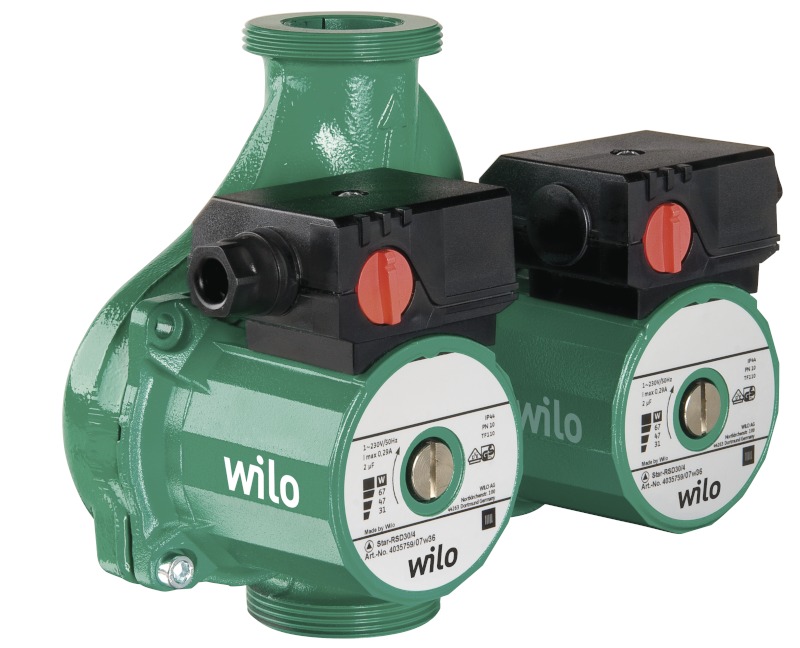
2.6 Low water pressure in the system
This problem occurs when the phases are incorrectly connected in three-phase pumps or the percentage of fluid viscosity is increased. For the first reason, it is enough to connect the equipment according to the instructions. In the second case, the repair comes down to cleaning the pipe filter, checking the good condition of the pipeline connected to the pump, and adjusting the installation parameters in accordance with the passport data of the equipment.
Very rarely break. But in case of any malfunctions, you should seek help from a specialist. But in order to prevent equipment malfunctions, it is necessary to periodically check its operation and monitor the health of all elements of the pump.
Rules for the operation of the circulation pump
When using a circulation pump for heating, you should follow some rules:
- The pump must not run at zero flow. Therefore, you should constantly monitor its work.
- The boiler should be used frequently. With rare inclusions, some elements may oxidize, and the device will fail. It is recommended to turn it on for a short time at least once a month.
- If there is no water in the heating system, the pump must not be turned on.
- Check engine temperature periodically. Do not allow the device to overheat.
- Hard salts often precipitate in pumps. To avoid this, it is necessary to control the temperature of the coolant. It must be less than 65°C. Then the circulation pump can work normally.
- It is necessary to check the connection of the electrical wires that are in the terminal block.
- Be sure to control the pressure of the water supply to the heating system. With slow or strong flow, the pump may degrade its performance or even cease to perform its function.
- It is necessary to check the pump housing and find out if grounding is present.
- Periodically check pump operation. This should be done based on specifications equipment.
- During operation, the pump should not make noise or vibrate. The circulation pump should work without any noise.
- It is necessary to frequently check the connections of the pipes to the pump. Sometimes there is a coolant leak. If you have such a problem, then you need to replace the gaskets or tighten the connecting components. Leaks must not be allowed when the circulation pump is running.
Preparing the pump for the heating season
In order for your heating system not to fail in winter, it is necessary to heating season check the operation of the entire system, and in particular the circulation pump.
It is necessary to check the health of the device:
- The gasket and fittings must always be lubricated. If it has dried out, then it is necessary to lubricate the elements again; It is necessary to check the mesh filter. It often gets dirty and interferes with the normal operation of the pump. If you notice blockages, then you need to clean them;
- It is necessary to connect the circulation pump to the pipelines correctly. by the most the best option installation will be in front of the heating boiler. With this arrangement, the formation of air pockets is minimized;
- The correct connection of heating equipment to the network can be checked with a special tester;
- Before the start of the heating season, it is necessary to check the operation of the pump. You can make a test run.
Pump problems and how to fix them
Any repair work can be carried out if the equipment is disconnected from the network. It is also necessary to pre-drain the site.
Consider what are the problems of the circulation pump:
- If you turn on the pump, but the shaft does not start to rotate, noise is heard. Why does noise appear and the shaft does not rotate? If you did not turn on the pump for a long time, then the shaft could oxidize. It is necessary to check its correctness. If the pump is blocked, it must be disconnected from the mains. Next, you need to drain the water and unscrew all the screws that connect the housing and the electric motor. The impeller can then be turned by hand and the motor removed. Pumps with low power have special notches. With their help, you can unlock the shaft. It is enough just to turn the serif with a screwdriver.
- Electricity problems. Often the pump is connected inconsistently with the voltage indicated in the technical data sheet of the equipment. It is necessary to check whether the voltage in your house matches the recommended one. And also it will not be superfluous to check the terminal box and all connections in it. You should also check the phases.
- The wheel is blocked due to a foreign object. In this case, you need to get the engine, as indicated in the first paragraph. In order to prevent various objects from falling into the wheels, you can install a special strainer in front of the circulation pump.
- If the pump turned on as usual, and then turned off. In this case, deposits may be the cause. They are formed between the stator and the rotor. To fix the problem, it is necessary to remove the engine and clean the stator jacket from scale.
- The pump does not turn on and does not hum. There may also be no voltage. There can be two reasons: the motor winding burned out or the fuse was damaged. First of all, you need to replace the fuse, but if after replacing it the pump does not start working, then the problem lies in the winding.
- The circulation pump vibrates during operation. Often this is due to bearing wear. In this case, the operation of the pump is accompanied by noise. To fix the problem, the bearing must be replaced.
- There is a loud noise when the pump is turned on. With such a problem, you need to release the air, and then install the air vent at the highest point of the piping.
- If the motor protection trips after starting the circulation pump? In this case, it is necessary to look for the cause in the electrical part of the engine.
- Often there is such a problem as improper water supply, as well as its pressure. In the technical passport of the equipment, the same values \u200b\u200bare indicated, and during operation, the pressure and flow differ significantly. This problem happens in three-phase pumps due to incorrect connection.
- You need to check the terminal box. Also check fuse contacts for dirt. It will not be superfluous to check the resistance of the phases to ground.
How to disassemble the circulation pump
Before starting the disassembly of the pump, it is necessary to carry out preparatory steps:
- Use the indicator to check the voltage.
- Often there is a blockage of the fan due to salts. They are deposited on the device due to a large number chemical impurities in the coolant.
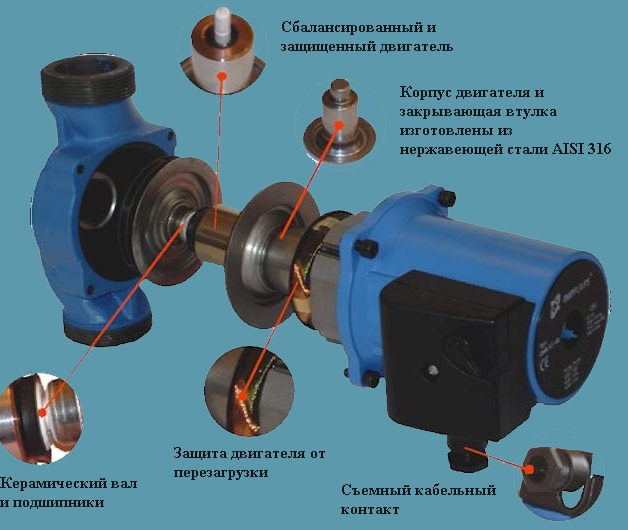
Many models are not subject to disassembly. Therefore, it is necessary to familiarize yourself with this issue in advance.
Before disassembly, it is necessary to: disconnect the heating equipment from the mains, close the bypass, but leave the water circulating, and then you can dismantle the device.
Before buying a heater, you need to know in advance about the possibility self repair. You can ask the seller about the availability of spare parts of the equipment. In many cases, it will be cheaper to replace the equipment with a new one than to repair the old one.








